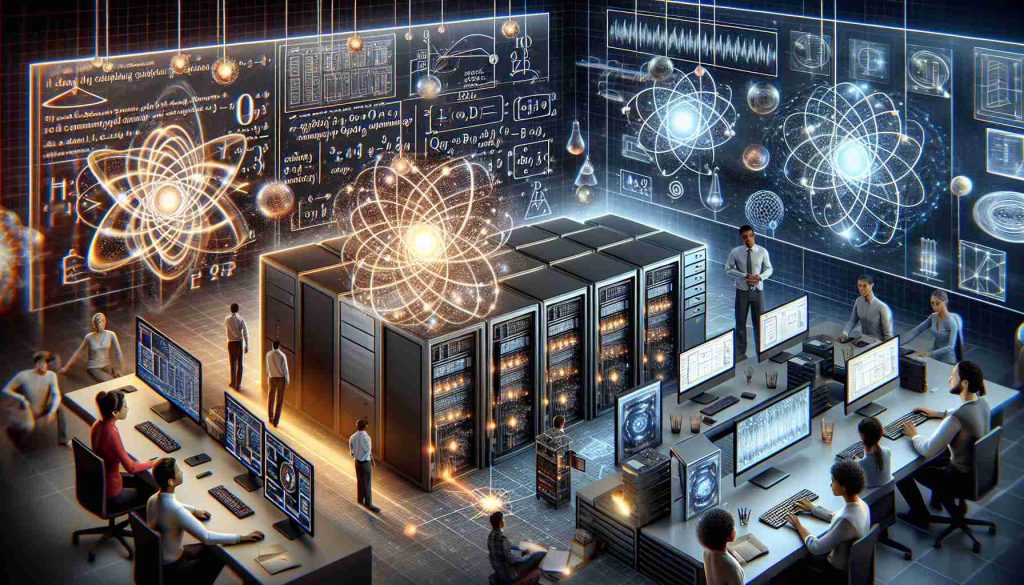- Physicists have developed a new type of qubit utilizing nuclear spin states in quantum dots.
- This innovation could enhance quantum communication networks by improving data storage and transmission.
- The method stabilizes 13,000 nuclear spin states in a collective quantum state, representing binary data.
- Implementing a feedback algorithm has enhanced resistance to noise, improving performance of qubits.
- The quantum memory demonstrated a storage duration of approximately 130 microseconds, indicating potential for longer coherence times.
- Commercial applications are on the horizon, with the integration of quantum dots and single photon emission.
- This breakthrough paves the way for advances in secure communication and distributed quantum computing.
In an exciting leap for quantum technology, physicists from the University of Cambridge and Austria have unveiled a groundbreaking type of quantum bit (qubit) that harnesses the power of nuclear spin states within a quantum dot. This innovative approach could reshape the future of quantum communication networks, offering a more efficient way to store and transmit quantum information.
Imagine a world where secure communications and powerful distributed quantum computing blend seamlessly. Current quantum networks operate on fragile entangled states of photons, which often degrade over distance due to decoherence. To combat this, researchers have sought ways to develop robust quantum memories that can reliably hold entangled states across vast distances, paving the way for effective quantum repeaters.
The team’s pioneering work involved stabilizing 13,000 nuclear spin states in a unique collective quantum state—each capable of representing binary 0s and 1s. This was achieved by employing a cutting-edge feedback algorithm to suppress damaging noise, enhancing the performance of electronic spin qubits significantly. During experiments, their quantum memory maintained stored information for about 130 microseconds, a promising indication of improved storage capabilities.
With commercial applications within reach, this advancement integrates a multi-qubit register using quantum dots that emit single photons—boosting technology readiness for real-world deployment. As researchers refine their methods, they anticipate longer coherence times and the opportunity to explore new quantum phenomena.
The key takeaway? This breakthrough not only positions quantum dots as vital components in future quantum networks but also unlocks new frontiers in secure communication and computational power. The quantum revolution is unfolding before our eyes!
Quantum Computing Revolution: Unveiling the Future of Secure Communication
Quantum technology is advancing rapidly, with recent breakthroughs promising to redefine how we understand computing and communication. Researchers at the University of Cambridge and Austria have introduced an innovative type of quantum bit (qubit) that leverages nuclear spin states within quantum dots, heralding a new era for quantum communication networks. This development is poised to enhance the efficiency of storing and transmitting quantum information.
New Insights and Innovations
The move towards using nuclear spin states offers several advantages:
1. Enhanced Stability: Unlike traditional quantum networks that depend on fragile photon entanglement, this new qubit design aims to create stable quantum memories, addressing the challenges posed by decoherence over longer distances.
2. Scalable Quantum Systems: By stabilizing 13,000 nuclear spin states, the researchers have laid the groundwork for developing scalable quantum systems, which are essential for building robust quantum networks.
3. Improved Feedback Algorithms: The use of advanced feedback algorithms to suppress noise has resulted in significant improvements in the retention time of quantum information, which is vital for practical applications.
Key Features of the New Quantum Bit
– Storage Duration: Experimental results indicate that the quantum memory retains information for approximately 130 microseconds, a significant improvement over prior technologies.
– Multi-Qubit Integration: The new approach integrates a multi-qubit register and enables the emission of single photons, which is crucial for the seamless operation of quantum networks and reducing losses during data transmission.
– Potential for Real-World Applications: As researchers refine these techniques, they foresee a clearer pathway to commercial applications of quantum communication technologies.
Important Questions About This Breakthrough
1. What are the implications for quantum communication security?
The new qubit design enhances the potential for secure communication, as nuclear spins can maintain entangled states with greater stability. This could lead to more robust encryption methods in the digital realm.
2. How will this technology impact the future of distributed quantum computing?
With better stability and longer coherence times, the technology may facilitate the development of distributed quantum computing systems, where separate quantum processors can work together more effectively.
3. What challenges remain before commercial applications can be realized?
Despite the promising advancements, challenges such as scalability, crystal quality of quantum dots, and the need for integrating existing infrastructure will need to be addressed before these technologies can be implemented widely.
Trends and Market Forecast
The quantum technology sector is anticipated to grow significantly, with projections suggesting a compound annual growth rate (CAGR) exceeding 30% over the next decade. Investments in quantum research are likely to escalate, driven by demand for secure communication solutions and the progression of global quantum networks.
Suggested Related Links
For further insights into quantum technology advancements, visit Cambridge Independent or explore the latest research at Austria Info.
As the quantum revolution continues to unfold, staying informed about these breakthroughs will be crucial for understanding the future of secure communications and computational capabilities.
